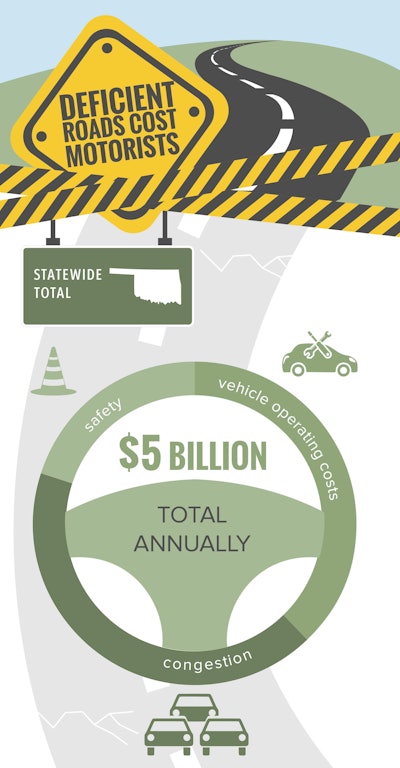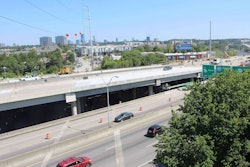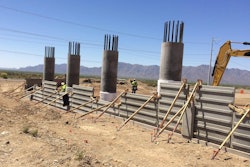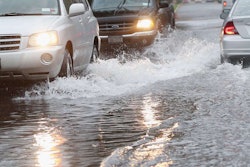
The report, “Oklahoma Transportation by the Numbers: Meeting the State’s Need for Safe, Smooth and Efficient Mobility,” shows 45 percent of the state’s major locally and state-maintained urban roads and highways are in poor condition with 29 percent in mediocre condition, 12 percent in fair condition and 14 percent in good condition.
TRIP finds that 15 percent of all the state’s bridges are structurally deficient. “While this is the eighth highest share in the nation, it marks a significant improvement since 2004, when the state ranked first in the share of structurally deficient bridges with 31 percent,” the group reports.
Across the state, vehicle operating costs for motorists are $1.9 billion, with safety-related issues costing another $1 billion and traffic congestion reaching $2.1 billion.
“Transportation infrastructure lays the foundation for economic development,” says John G. Johnson, executive director of the Association of Central Oklahoma Governments (ACOG). “It is critical that our nation invest in the transportation infrastructure that is the lifeblood of businesses, great and small. At ACOG, we are privileged to serve as the stewards of local, state and federal dollars that improve the transportation systems that link Central Oklahomans to each other and the world, and the world to us. We believe improvements to infrastructure increase the quality of our lives and are proud to advocate for these improvements.”
TRIP periodically releases state and national reports such as this one to highlight the need for additional investments for transportation infrastructure at the local, state and national levels. These reports are available at tripnet.org.










